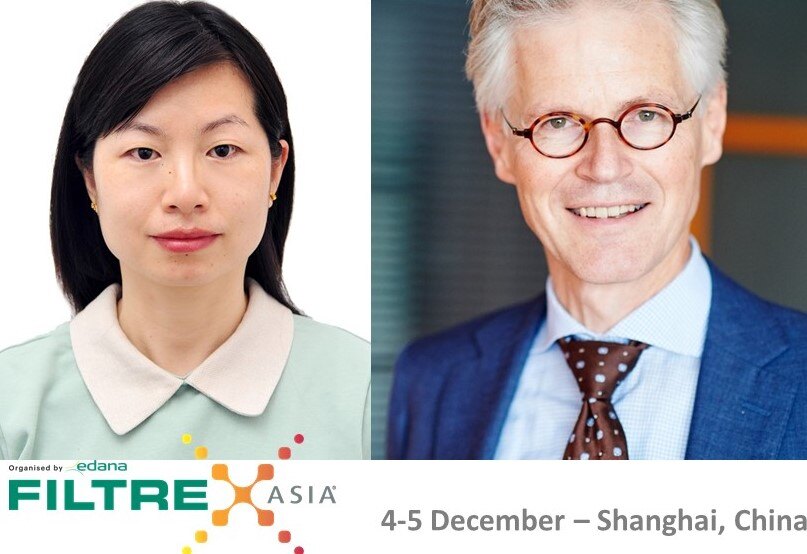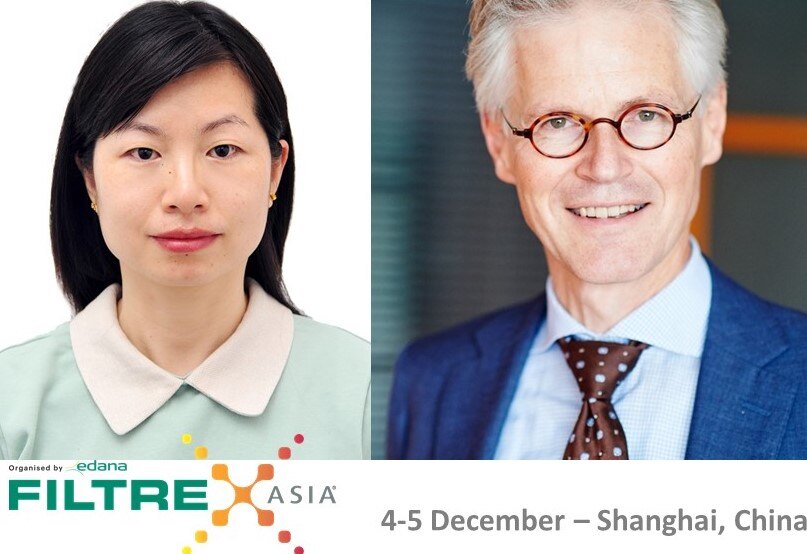Innovation and challenges in cabin air filters

In the run up to FILTREX™ Asia, Kally Ding caught up with Marines Lagemaat, EDANA's Technical Director on innovation and challenges in cabin air filters

Kally Ding Sr. Application Engineering Manager at Freudenberg Filtration will give a presentation at FILTREX™ Asia on Lifetime behavior of fine dust cabin air filters.
She caught up with Marines Lagemaat, EDANA's Technical Director on innovation and challenges in this area.
Marines Lagemaat (ML): You are joining us at FILTREX™ Asia to look at cabin air filters. What innovation in this area excites you the most?
Kally Ding (KD): I am currently especially excited about the new focus on gaseous pollutants and odors and the further advancements taking place in this context. At Freudenberg, we have a new product innovation in stock: the micronAir Gas Shield. It consists of three regionally customized activated carbon combinations for combi filters that adsorb a wide range of harmful gases and unpleasant odors from the air. We recently introduced this innovation to the market.
ML: And where are the biggest challenges?
KD: There is and always has been a big challenge in finding the best balance among cabin air filter performance parameters. Higher filtration efficiency, lower pressure drop and longer filter life time are the three most important parameters to evaluate fine dust filters. But usually by improving one parameter it can decrease performance of another, so working with customers to find the preferred balance, while striving to develop improvements in all parameters is a key goal of Freudenberg. In addition, for combi filters, beside all the above, adsorption efficiency and capacity of various gases are also critical parameters.
ML: The capacity of air filters seems to be ever growing, to a molecular level for example, promising to filter out viruses, VOCs and so on. How likely are we to see a large scale roll out of such technology?
KD: The filtration technology itself is available. In Tesla’s Model X, for instance, a HEPA filtration system is integrated into the vehicle. This sophisticated solution is capable of capturing even the finest dusts and gaseous pollutants, as well as bacteria, viruses, pollen and mold spores. The success of this technology in the market depends on the willingness of car manufacturers to do more to improve the health of passengers’ health. Increased performance will continue with the advancement of nonwoven technologies and other base components, filter design, and how much interior architecture the OEM dedicates to filtration. We are ready to realize tailored concepts together with our customers.
ML: Have considerations of more sustainable practices affected your planning, sourcing or production processes? If so, how?
KD: Freudenberg is a values-based technology group where responsibility for society – including the claim to sustainability – has been anchored in our corporate values for more than 165 years. When raw materials are delivered and during production, short distances and efficient machines keep energy use low, reducing CO2 emissions as much as possible. Once our cabin air filters are ready, minimal packaging material is used and we make sure that is made from recycled or renewable materials. Our cabin air filters are manufactured fairly close to where our customer are in Suzhou and Chengdu, thus enabling us to take advantage of short-distance transportation, with the added benefit of reducing energy consumption.
ML: What other sessions on the FILTREX™ programme are you most looking forward to?
KD: Following on the theme of looking at all aspects of filtration, this conference is a terrific opportunity to network with knowledgeable filtration experts from across the industry with deep knowledge. I’m looking forward to meeting new people, finding out more about new filtration techniques and building new relationships.